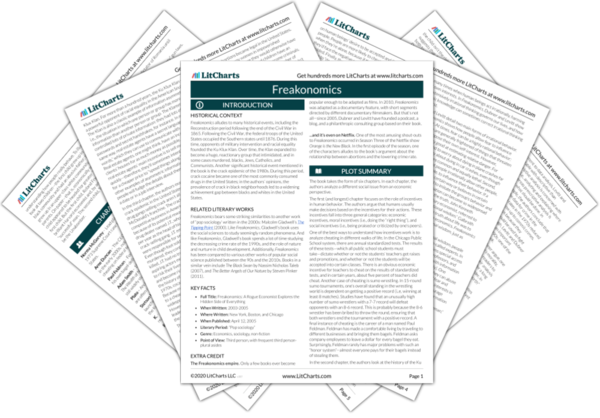At several points in the book, Dubner and Levitt bring up a “hypothetical” situation concerning two children, one white, the other black. The white child is raised in a nice part of Chicago, has two loving parents, and does well in school. The black child grows up in an impoverished part of Florida, has an abusive father, and faces lots of adversity. However, the two children defy all expectations: the white child grows up to be a terrorist, while the black child grows up to be a Harvard economist. At this point, it’s revealed that the two children aren’t hypothetical at all: the white child is Ted Kaczynski (the Unabomber), and the black child is Roland Fryer (an economist, cited several times in the book). Ultimately, the white child / black child scenario symbolizes the inability of economic models to predict human behavior with complete accuracy. No matter how many factors economists study (income, parenting, education) in the context of a large group of people, it’s still a mystery how individual humans will respond to this set of influences.
The white child and the black child Quotes in Freakonomics
The second child, now twenty-eight years old, is Roland G. Fryer Jr., the Harvard economist studying black underachievement.
The white child also made it to Harvard. But soon after, things went badly for him. His name is Ted Kaczynski.










